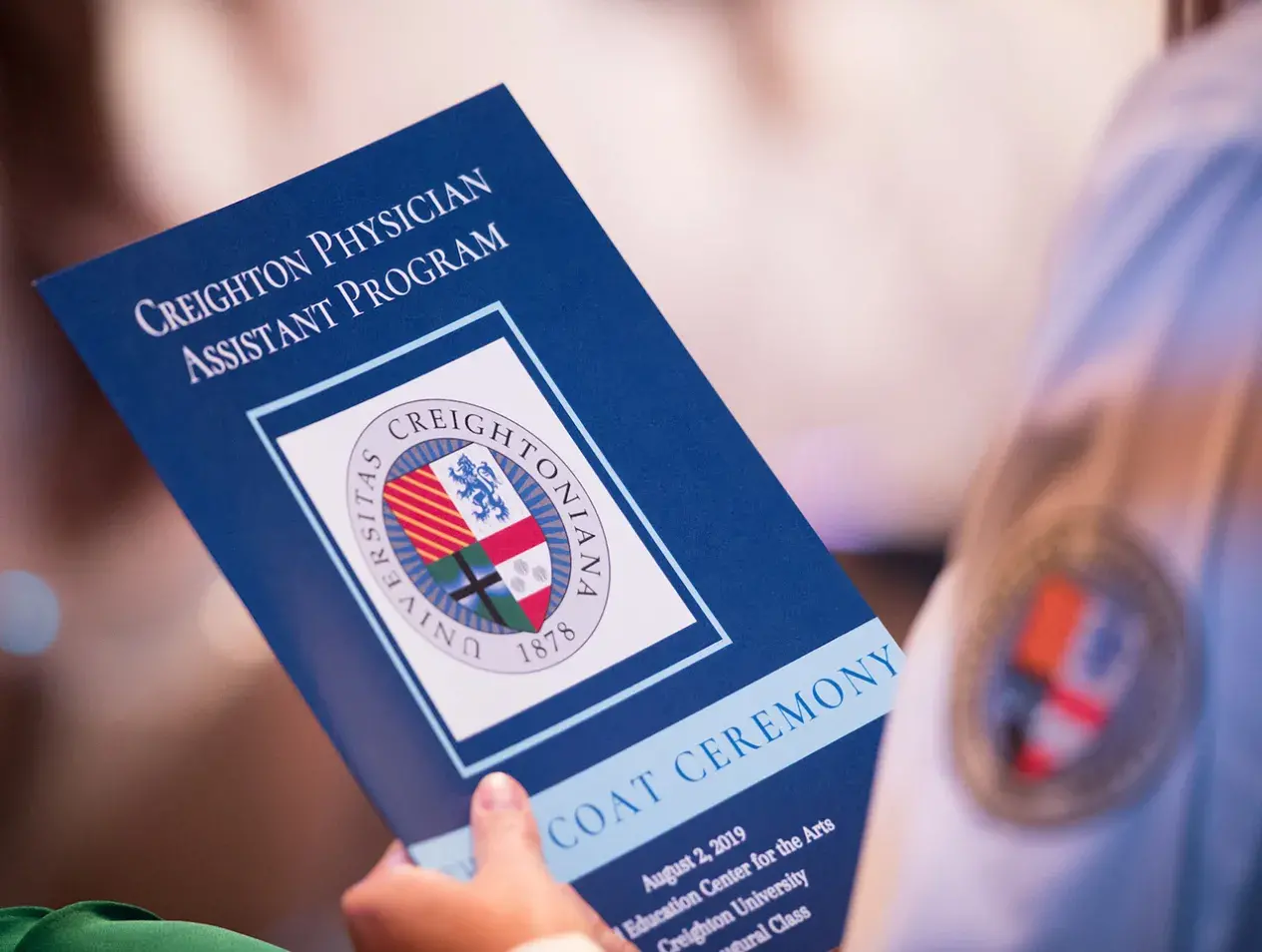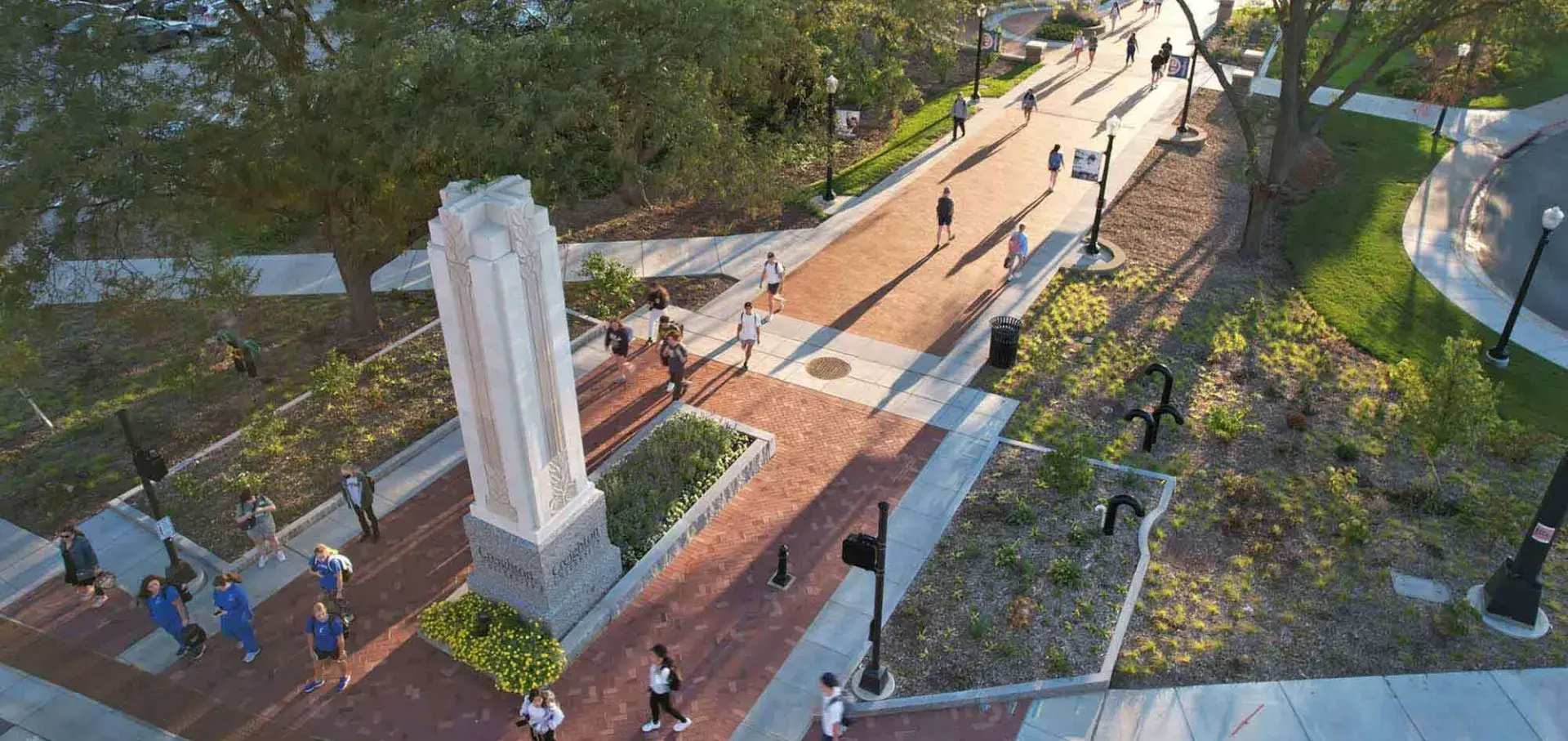
PA Omaha Program Goals
Four Program Goals for the Physician Assistant Omaha Program
Goal 1: Support a culture of service to others and to community
Consistent with our mission, service to humanity will be emphasized throughout the program. The admissions process will select for applicants who have demonstrated a commitment to service to others. Service activities will be incorporated into the curriculum and students will be encouraged to seek extracurricular service opportunities.
OUTCOMES:
- Students’ service hours acquired prior to PA school
Average Number of Service Hours Prior to PA School | |||||
|---|---|---|---|---|---|
| CO 2023 | CO 2023 | CO 2023 | CO 2024 | CO 2025 | CO 2026 |
| 271.00 | 114.50 | 343.00 | 146.20 | 299.00 | 2010.00 |
- Average number of service hours completed during the students’ time in the program.
Average Number of Service Hours During Program | ||||
|---|---|---|---|---|
Benchmark | CO 2021 | CO 2022 | CO 2023 | CO 2024 |
>168/hours | 184.3/student | 184.35/student | 187.8/student | 208.8/student |
Goal 2: Foster the personal and professional development of students as medical providers
A commitment to personal and professional growth is a program priority. Students will participate in a dynamic curriculum that integrates ethical and professional principles throughout, allowing for student growth and a better understanding of one’s own biases and beliefs. This process will involve instruction, mentoring and feedback as well as self-reflection activities. Professional behaviors will be evaluated by faculty and clinical preceptors using professionalism evaluations. Feedback and mentoring will be provided on an ongoing basis. Students will be asked to reflect on their professional behaviors and to explore their own personal set of values and beliefs.
OUTCOMES:
- Percent of students who achieve 100% satisfactory ratings on their professionalism evaluations by graduation
- Assessment of student perceptions of personal and professional growth as measured by the student graduate survey.
- Percent of Students who Achieve 100% Satisfactory Ratings on Professionalism Evaluations by Graduation
Percent of Students who Achieve 100% Satisfactory Ratings on Professionalism Evaluations by Graduation | |||||
|---|---|---|---|---|---|
Benchmark | 2021 | 2022 | 2023 | 2024 | |
100% | 100% | 100% | 100% | 100% | |
Benchmark: The program's benchmark for professionalism is a required component of the program, evaluating readiness for graduation. | |||||
- Perceptions of Personal and Professional Growth - Graduate Survey
Student Perceptions of Personal and Professional Growth as Measured by the Graduate Survey | |||||
|---|---|---|---|---|---|
Area Assessed* (see below) | Benchmark | Class of 2021 | Class of 2022 | Class of 2023 | Class of 2024 |
1. | 3.0 | 4.8 | 4.9 | 4.7 | 4.8 |
2. | 3.0 | 4.7 | 4.9 | 4.9 | 4.7 |
3. | 3.0 | 4.7 | 4.9 | 4.9 | 4.8 |
4. | 3.0 | 4.9 | 4.9 | 4.8 | 4.8 |
5. | 3.0 | 4.9 | 5.0 | 4.7 | 4.8 |
Benchmark: Students are required to complete a Graduate Survey at the conclusion of the 28-month program. Likert scale 1.0-5.0 with 3.0 set as minimum standard. | |||||
*Area Assessed
- I understand the ethical and professional values that are expected of the profession.
- Personal and professional development program competency.
- Professionalism program competency.
- My PA program has done a good job of fostering and nurturing my development as a Person.
- My PA program has done a good job of fostering and nurturing my development as a Physician Assistant.
Goal 3: Deliver an educational experience that provides students with the knowledge and skills necessary for entry level practice as physician assistants
Students will participate in an integrated curriculum and a broad array of clinical experiences that will prepare them to enter the workforce in a wide variety of practice settings.
OUTCOMES:
- PANCE pass rate
- Student perception of knowledge and skills as measured on the
- Graduate Survey
- Alumni Survey
Alumni Survey - Preparation for Meeting Program Competencies
Preparation for Competencies - Alumni Survey
Response Rate: 65% (n=15 of 23 for CO2021)
Students responded to the below items using the Agreement Scale: 1=Strongly Disagree; 2=Disagree; 3=Neutral; 4=Agree; 5=Strongly Agree
Preparation for Competencies - Alumni Survey | ||||
|---|---|---|---|---|
| CO2021 | CO2022 | CO2023 | CO2024 |
| Interpersonal and communication skills | 4.7 | 4.9 | 4.66 | 4.78 |
| Interprofessional collaboration | 4.7 | 4.8 | 4.75 | 4.69 |
| Medical knowledge | 4.7 | 4.8 | 4.63 | 4.67 |
| Patient care | 4.8 | 4.8 | 4.66 | 4.78 |
| Personal and professional development | 4.7 | 4.9 | 4.69 | 4.58 |
| Patient-based learning and improvement | 4.7 | 4.8 | 4.63 | 4.72 |
| Professionalism | 4.7 | 4.9 | 4.75 | 4.78 |
| Systems-based practice | 4.7 | 4.9 | 4.63 | 4.78 |
Goal 4: Achieve a first time PANCE pass rate that is above the national average
This goal will be measured annually with the NCCPA provided data on program first time pass rate as compared to the national average.
OUTCOMES:
- Percent first-time pass rate by graduates on the NCCPA PANCE exam.
- View the first-time pass rate




